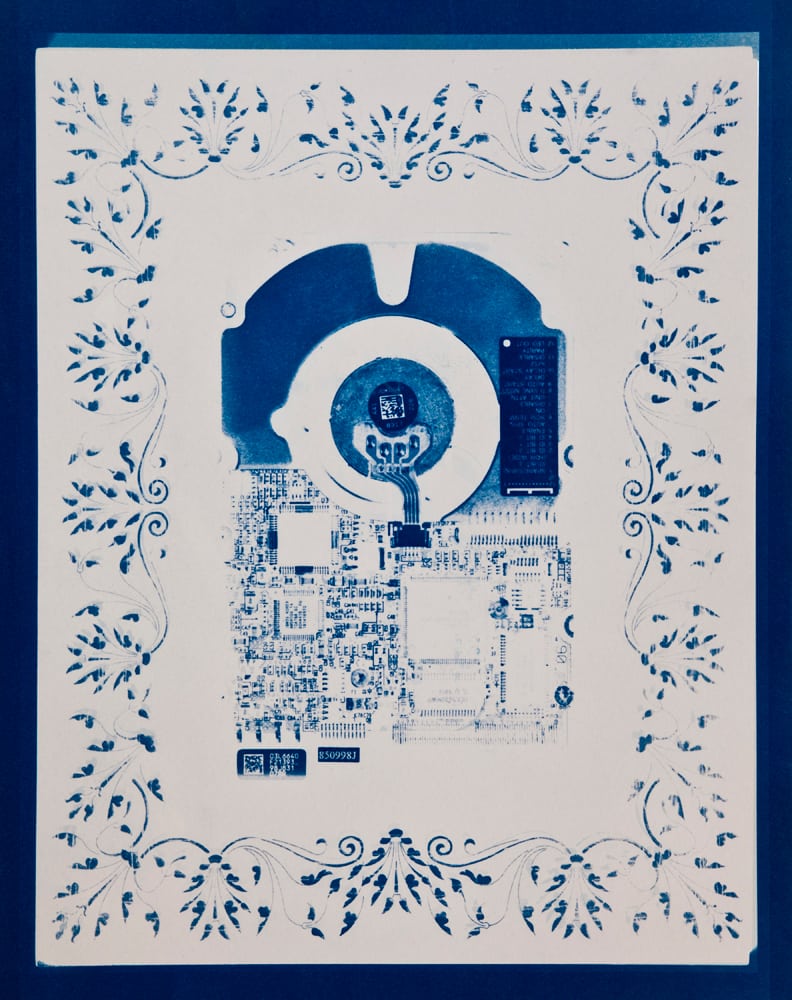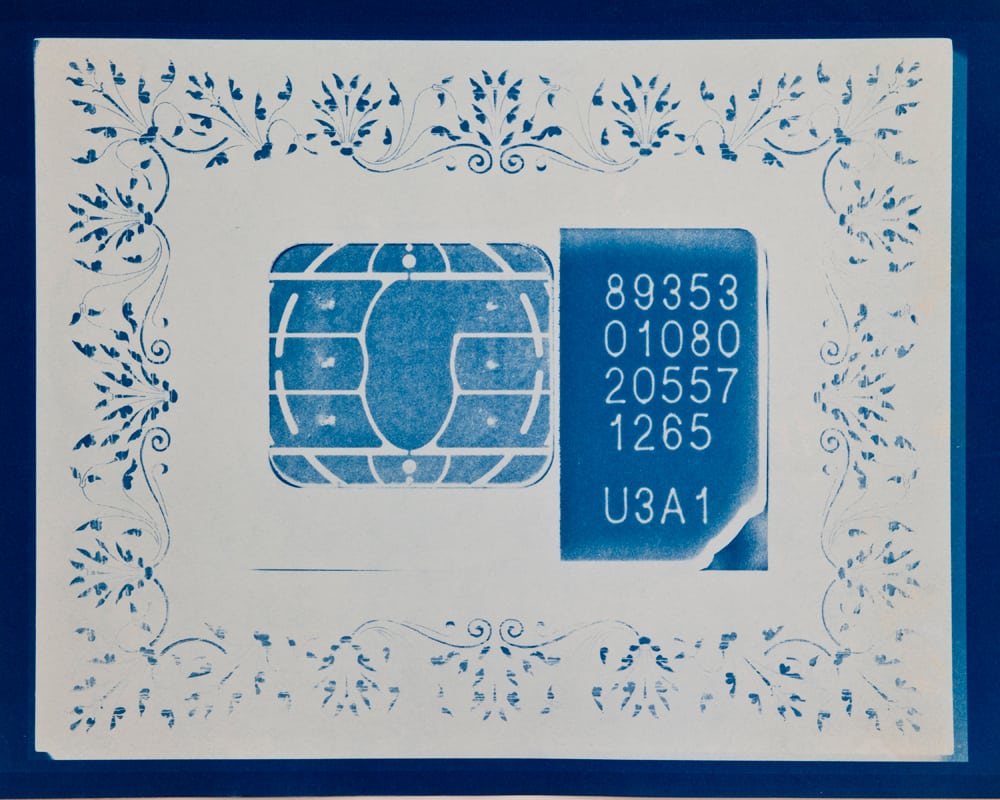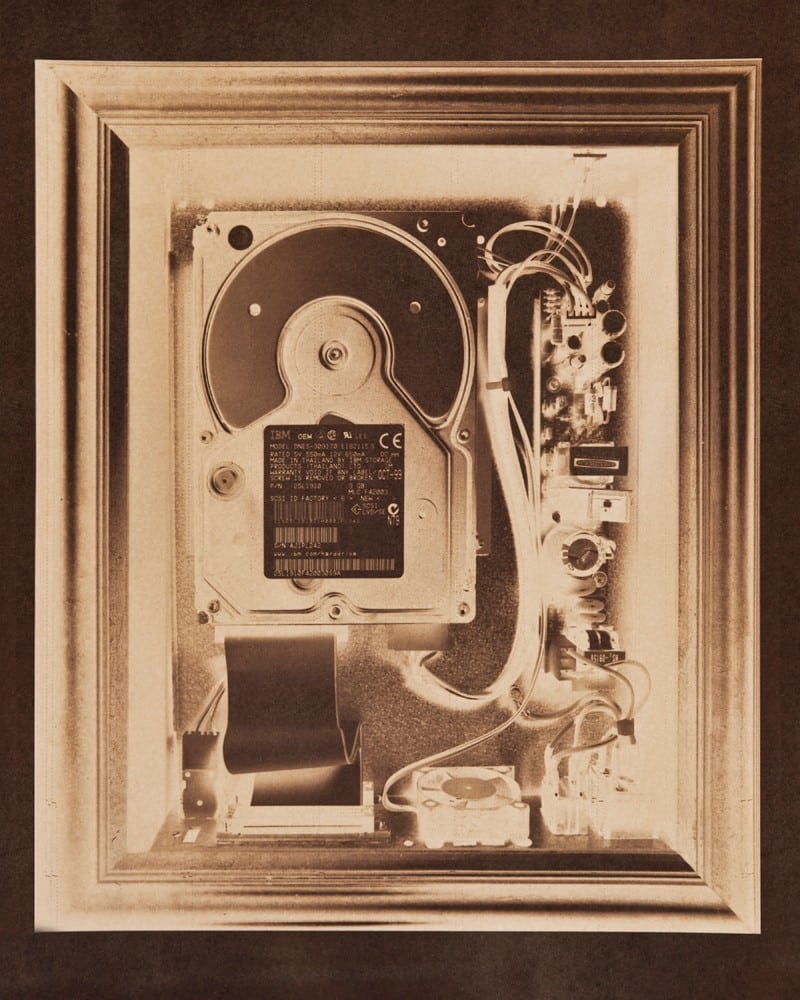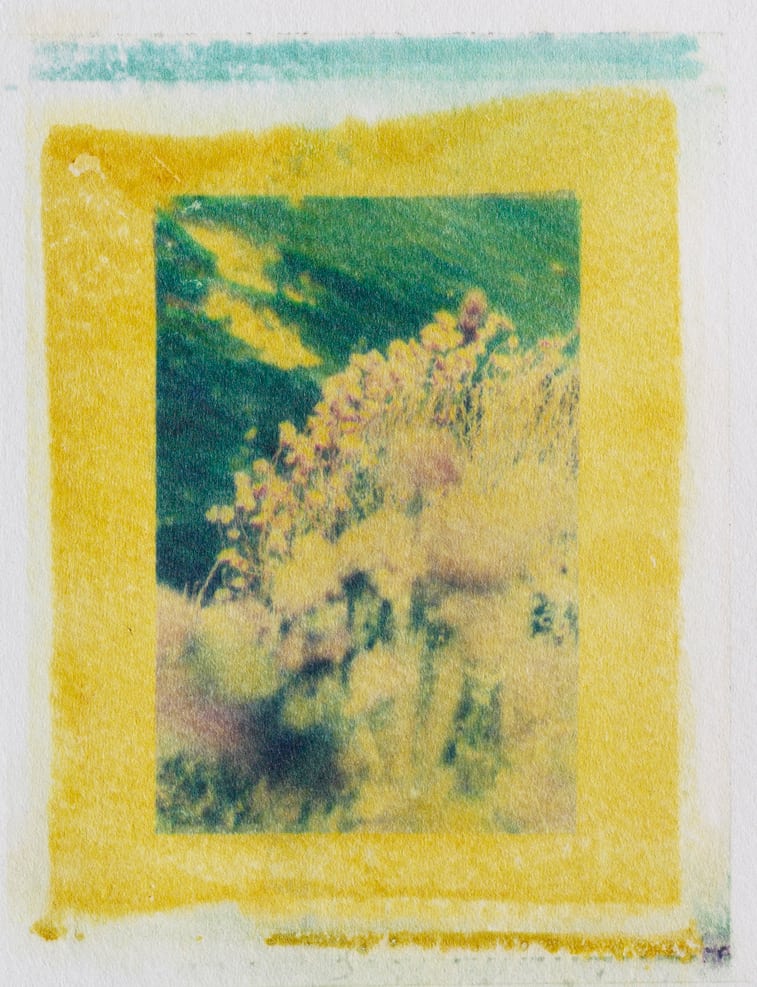A few little experiments here in alternative processes: Cyanotype – This printing process dates back to the 19th century. Its a beautifully simple process, which gives a really attractive result. Photography was an extremely cumbersome process back then, and required considerable resources. It was very much part of the wild pace of technological development that made the world smaller and faster through new transport and communication advances. There is now a growing interest in these alternative printing methods and you can find Facebook pages dedicated to popularising theses rediscovered arts. The Cyanotype is one of the most accessible of these methods, and the chemicals are relatively safe to handle. You will need some sort of negative to start with. You could use a 5×4 neg or make one using acetate and a printer.
Anna Atkins was an well know early practitioner of this early printing method.
Digital Memory, 1 & 2. Cyanotype © John Jordan photography
The VanDyke process (below) gives a very pleasing copper toned image which has a beautiful shimmer in angled light. It requires a direct transfer onto watercolour paper treated with Van Dyke solution but any absorbant material can be printed onto. Firstly, I created a negative by merging 2 different images together in photoshop. This negative was then printed onto an acetate sheet, and allowed to dry. You then prepare your printing paper which can be watercolour (its conveniently big and takes soaking well) and also allow to dry. Tape the acetate negative onto your prepared paper and expose for 3 minutes approx in a ultraviolet contact maker. Then wash in a tray for 15 minutes, hang up and allow to dry. Easy peasy. Other methods include the Tintype and Daguerrotype, of which Chuck Close would be a well known exponent.
This is an example of a polaroid transfer. A Polaroid is shot and allowed to develop for a few minutes, then peeled apart and pressed onto moistened watercolour. The result is a feint, soft image a little like an actual watercolour. You can cheat too by rephotographing an existing print onto polaroid in the studio.
The top image is a view overlooking the Cliffs of Moher, and the bottom image is one of the Tall Ships in Dublin.
This is a very simple sort of alternative process, created by taking an existing black and white print and toning it in a blue toner bath. It works well with strongly graphic prints like this.
What makes using alternative processes so satisfying is the ‘happy mistake’ element, the randomness thats often eliminated with digital photography. You use what you get. Its also very hands-on and slow, but thats part of the charm.
A lot of the the ‘filters’ that you see in Instagram are derived from the randomness and of early photographic experimentation. You didn’t think that the kids at Instagram invented them, did you?






